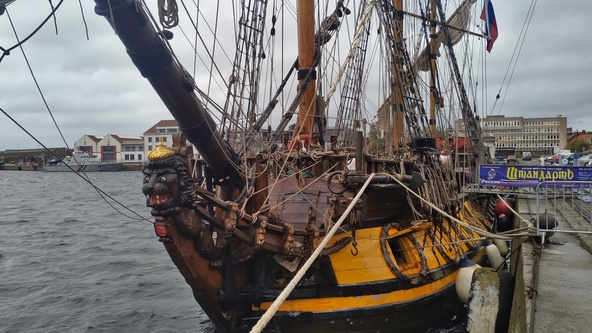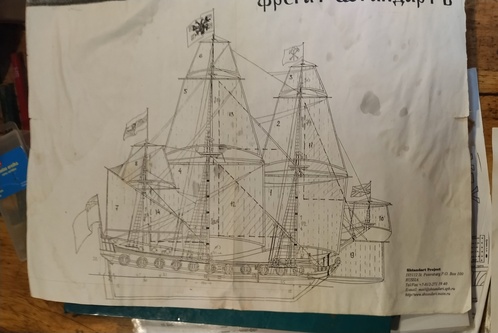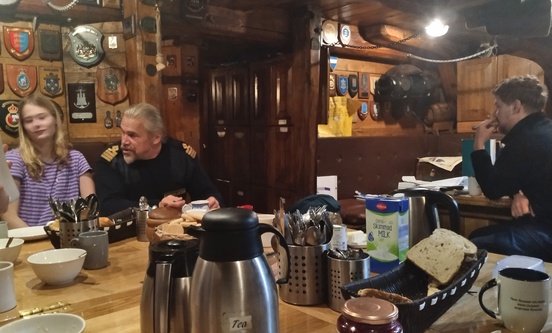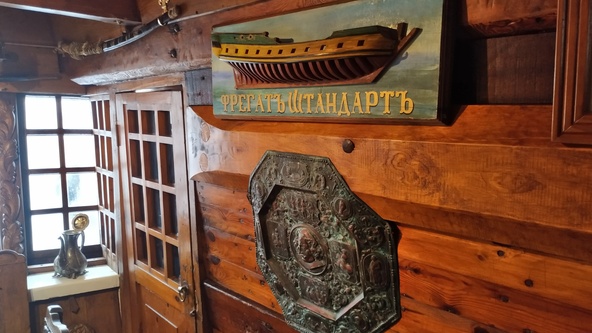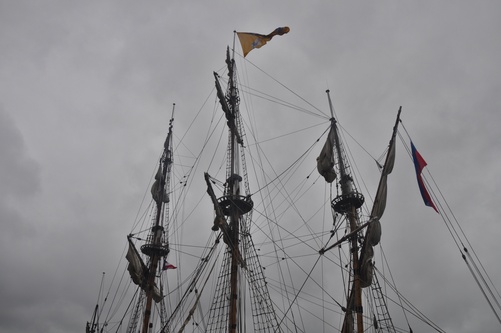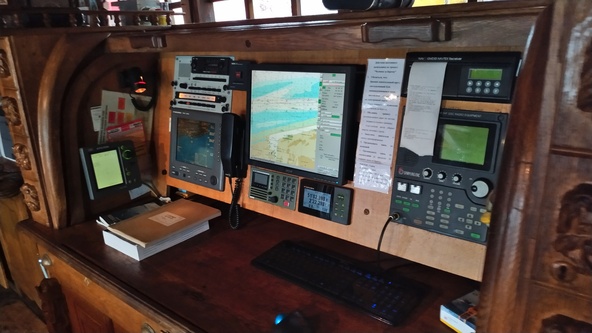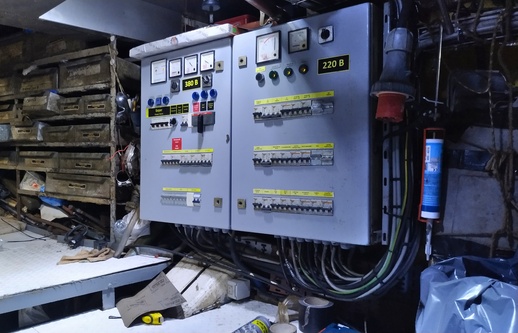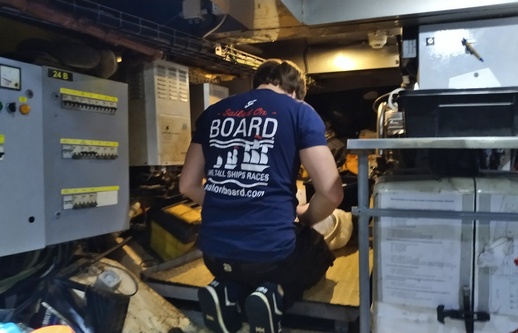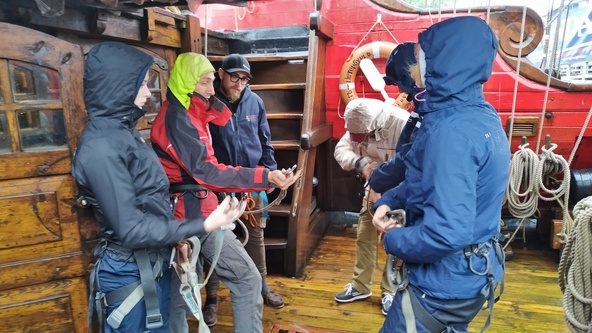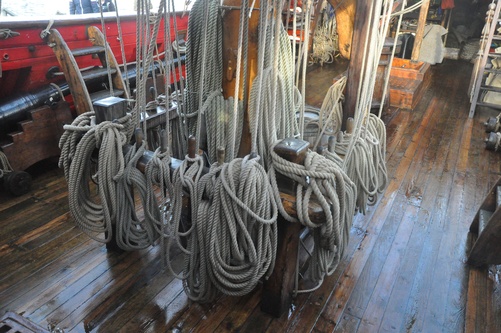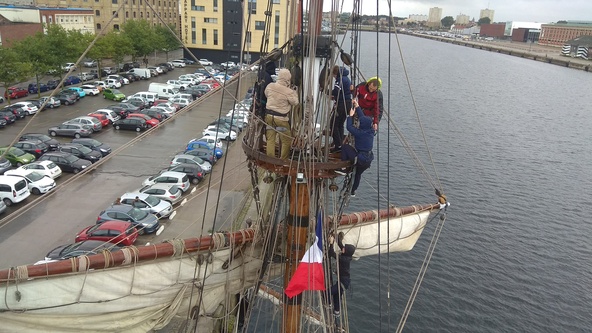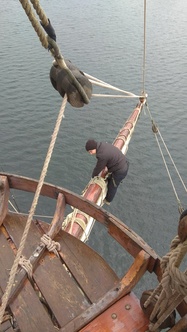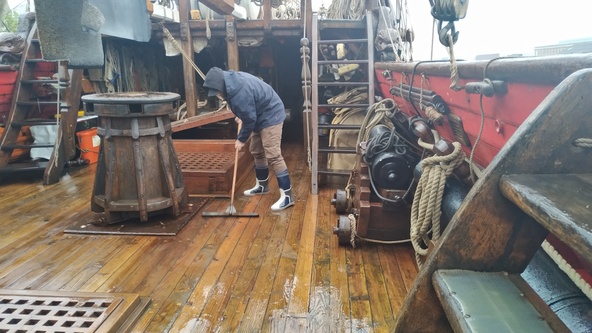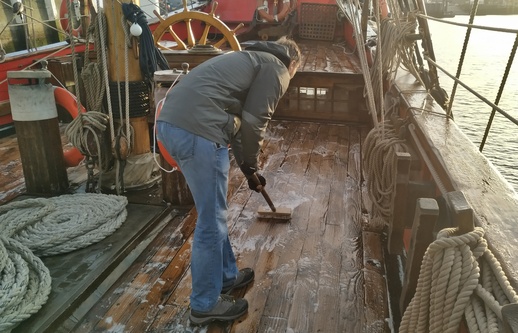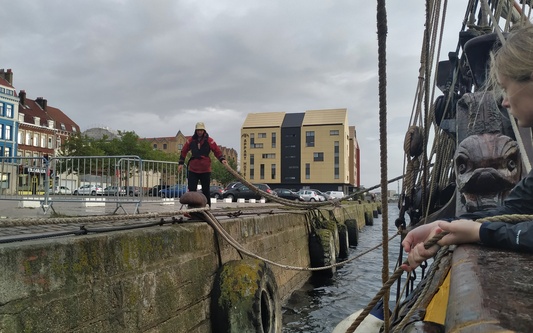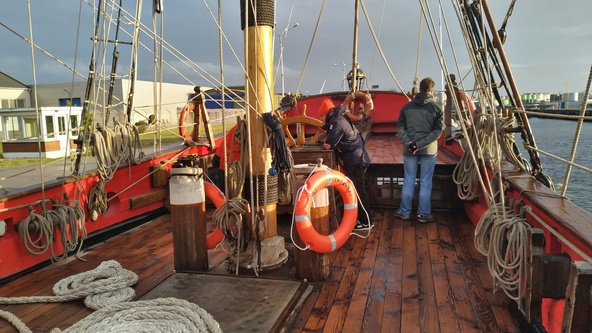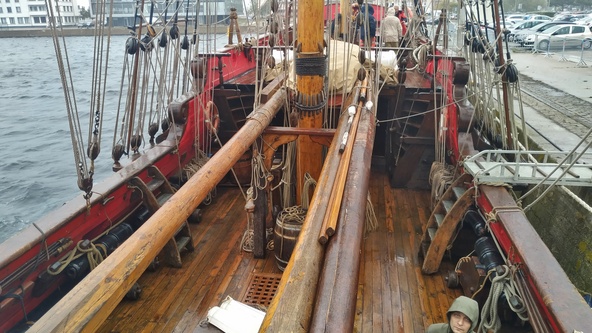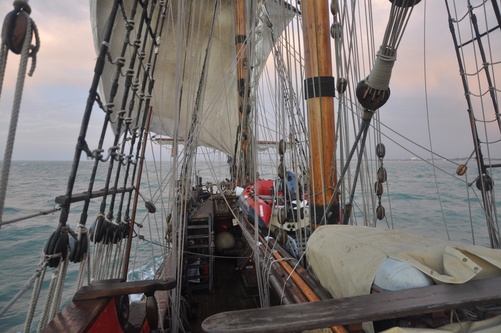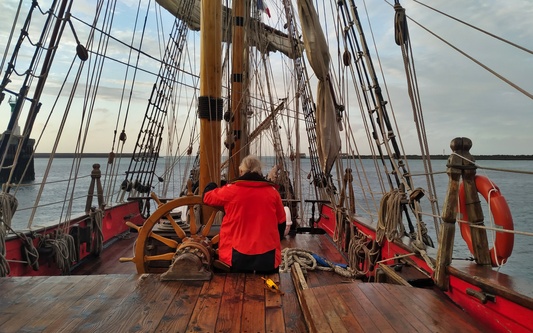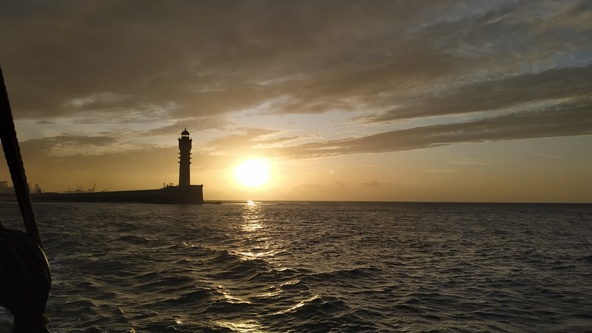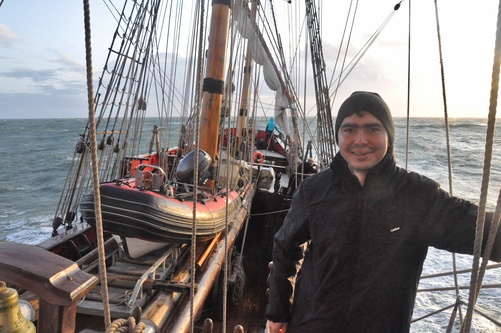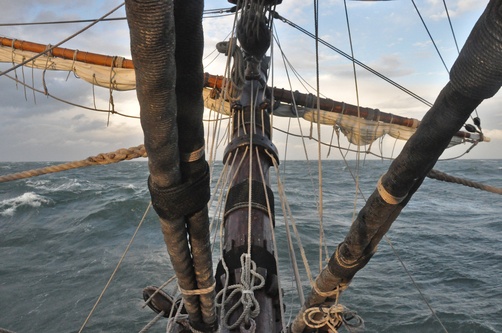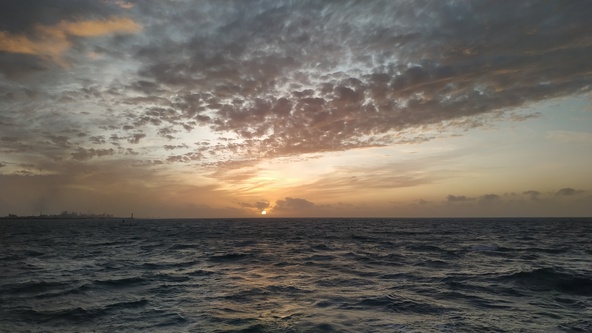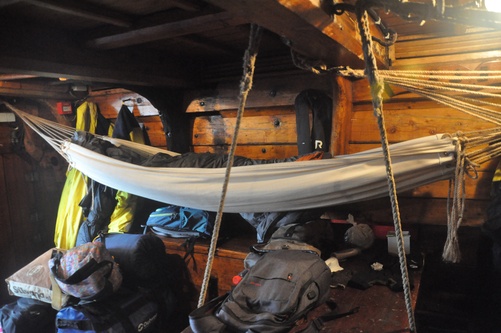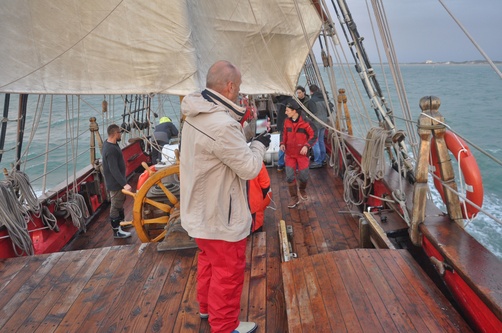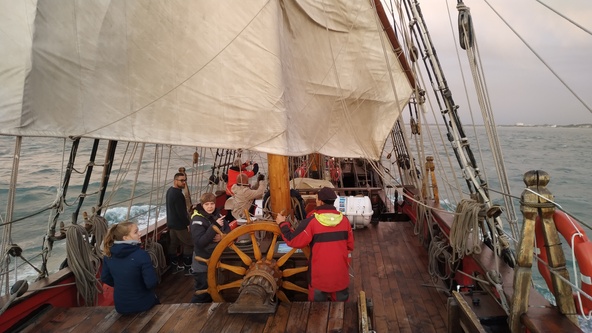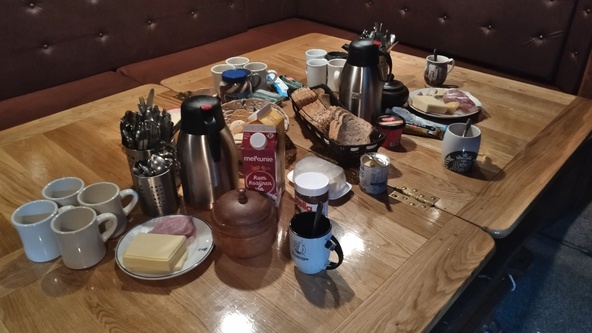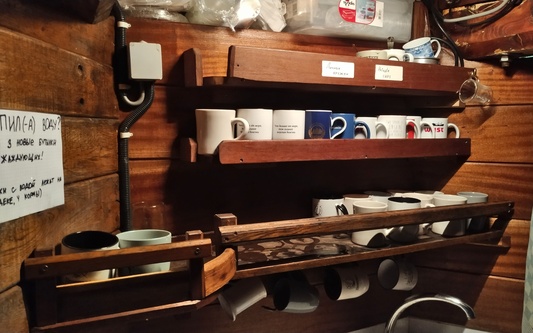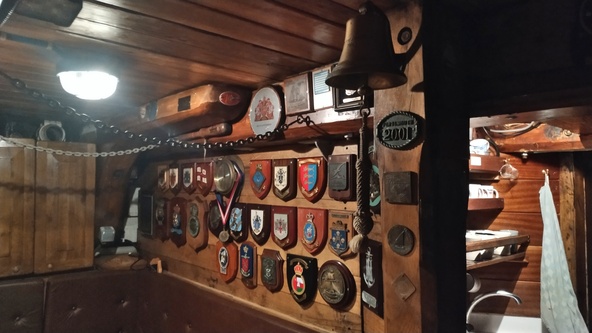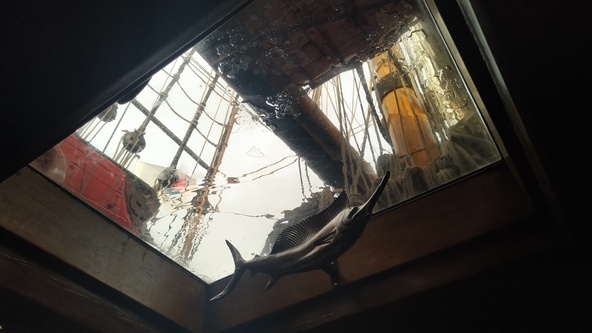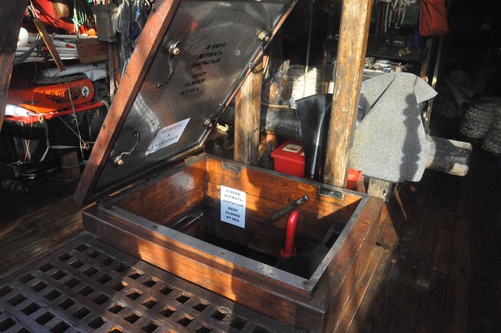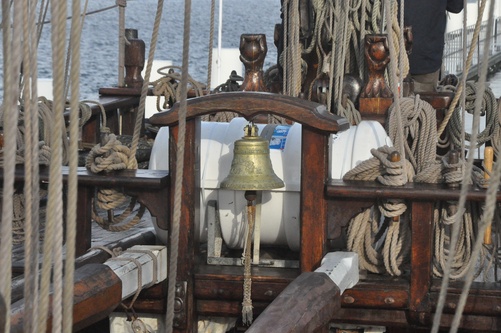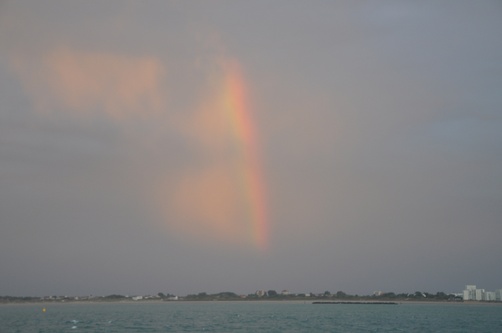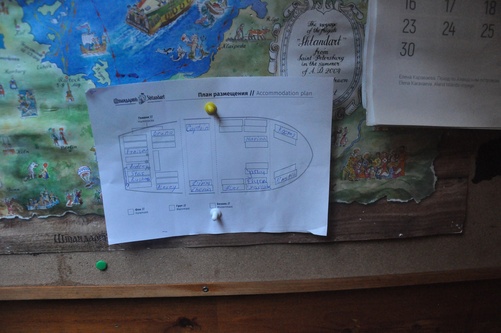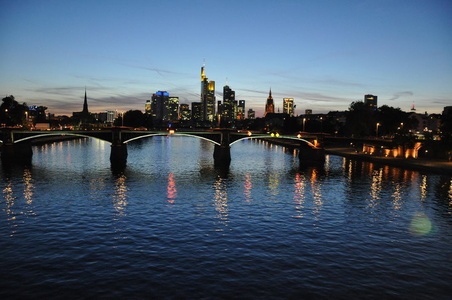Shtandart 28.09.2019

In mid of July I couldn't even imagine that by end of September I would be sailing the sea on a wooden frigate. However this was exactly what happened to me.
My friends learned about Shtandrart project and signed up to go from Dunkirk to Amsterdam. There was no time to think, so I just jumped in. So here I am.
The ship is non-commercial project. In 1990s in Saint Petersburg volunteers decided that people need a frigate copy from Peter the Great times. So they chose Shtandart frigate and build a replica. It was a hard job through years, but finally in 1999 they did it. The main inspiration and heart of the project was and is Vladimir Martus. He's the captain today (check the photo below).
Frigate was built in Saint Petersburg, but due to political games the ship can't come back home. More than ten years it's sailing from one European port to another non-stop. Anyone can sign up as volunteer to the ship (and pay a little donation for ship maintenance) even with no prior sailing experience. Just come and learn in production :)
Even though that's a replica of 18th century frigate, it has modern diesel engine and fancy navigation (:
However the crew tries to use engine as less as possible: it consumes way too many diesel which is extremely expensive. Keep in mind that's non-commercial project. During my sailing experience the engine was use only in port area. The rest was real sailing. Regarding navigation: it's all relied on modern technologies. It makes to sense to try navigate based on stars and other obsolete stuff.
That's the engine.
Volunteers are split to three shifts. Plus every group has at least one officer from professional crew. The day is divided to 4 parts. From 8 to 12 (in the morning and in the night) my group was responsible for the ship sailing. The rest time could be used for sleep or personal stuff (unless urgent help was needed somewhere). Other groups shared the rest hours. So this way every minute some group was responsible for the ship. The hardest shift was from 4 to 8. Fortunately it wasn't mine.
Before leaving the port we went through short training on how to use sail and climbed the pole (with piton-belay). It was just 15 meters high (:
It was ok to climb up. Until the negative angle started. After that I also had to reach end of the sail. On a rope. Fortunately there was a special safety rope.
There are 3 more activity types in addition to shift. Those are rotated on daily basis between groups. Wash the deck (the ship needs it to prevent deck boards cracking, once a day), wash the toilet (once a day) and cook for entire crew the whole day. 4 times a day actually (7:30, 11:30, 15:30, 19:30). Guess which one is the worst :)
The ship won't untie itself. Someone from the crew has to do that. However it's not always possible to jump from the ground to the ship. In this case there is a special motor boat to pick up the guy and get him onboard. The same story when ship gets to a new port.
This is the boat and its storage place. We had to lift the boat up (or down) manually on ropes: there's no any automation for that. It's a replica of 17 century frigate in the end. The whole thing requires at least 5-6 sailors.
Sails are controlled manually as well. If sailors on shift don't have enough people to change all of the sails quick enough, normally guys who rest are called for help. However if the weather is good and there's a good wind in the right direction, it doesn't normally happen.
I had two full 4 hour shifts during sailing. The first one was just amazing. Nice weather, good but not strong wind, beautiful sunset. The best way to feel the ship and how to drive it. Yeah, every shift sailor has his quota with the ship wheel and actually drives the thing. It was interesting experience.
The main task for a wheel guy — follow the right route. Sounds easy, but it's not :)
First of all, you have to figure out where the ship is going right now. Ship head doesn't keep the straight direction all the time. It goes from left to right and back up to few degrees from the line you need, but it's still moving forward.
Then whenever you turn the wheel, it doesn't change the angle right away. You have to wait for a little while. So it's quite easy to turn too much, so you have to fix it afterwards.
Finally you have constantly track and fix the direction, cause there are different water flow which can easily affect the ship.
For my second shift I wasn't that lucky: it was dark, strong wind, storm (waves up to 2 meters high), plus it was rainy (sometimes like cats and dogs). I even saw a lightning a few times. However once you're in the sea there's no way back, you need to go forward. Even though it was much harder to control the ship: it didn't behave in the same way as it was in the still weather. Where yesterday it was enough a half wheel turn, today I needed a couple full turns. Sometimes. Sometimes not (:
Plus any mistake cost you more. The wind was so strong, that if you deflect too much from your direction, the wind will hit the sail from the wrong angle and it might break something. If you're lucky enough, you might just to remove the sail. If not it might break the entire mast.
Moreover, when you're not on the direction the rocking is much much stronger. The team downstairs feels it, trust me. So it's better to keep the course.
Before the trip I was worried about seasickness. Fortunately I didn't experience anything like that. However we had a couple of guys who felt it way too bad. One guy was literally green and barely could do anything other than lying.
The sleeping place was perfect. A hammock (genial human invention) ideally fits the ship: even during the storm your body doesn't move relative to ground and you don't feel the storm at all. Just the ship waves around you, but who cares :) Plus hammocks were stretched really well. The sleep felt like on a good bed.
Pills against won't help. However it will be much easier on top, when you can see a horizon line. Captain also advised to play something to those who didn't feel very well. Like games in pairs where you had to take your partner out from balanced position. It looked like it really did help a lot.
People get used to the sea after a while. Just need to survive the first few days.
In the original version the toilet looked this way. Just a hole on a ship nose. I bet it was a hard time to go there during the storm. In the replica there is a modern version. This is the only place on the ship where you don't need to save the water (:
I already mentioned additional duties. Here was my turn to cook the breakfast :)
The kitchen should be special: all equipment should be fixed very good. Otherwise after the first storm you'll have to seek everything through the entire hold. Most likely already broken.
Cups. That's the only thing every team member has to wash himself. Everything else is on the guys on duty. But the cup should be taken care. Always.
During initial instructions it was explicitly mentioned multiple times the worst thing might happen in the sea is man over the board. During the sailing (especially during the storm) the understanding comes very clear. The ship sails fast, waves are high. Even if someone reacts very fast and drops a life vest really fast, it doesn't guarantee the guy over the board will see it and will make it to the vest. Plus the ship should slow down, make a U turn and return to pickup the guy. It's very complicated.
The bell. It's used to gather a team. Or about a shift change (they use different signals for those).
Downstairs there are two more bells: one is used to call for a launch or other meal, the second one can be used by captain only and means the team is allowed to have a drink. In the sea it's a dry law, nobody is allowed to drink. In the port the team can have a drink, but only if captain allowed it. That's why nobody but a captain can ring this bell.
The story might be a bit puzzle-headed, but hopefully interesting enough.
This was an amazing experience. I can't describe everything with words and definitely advise to try it out yourself.

